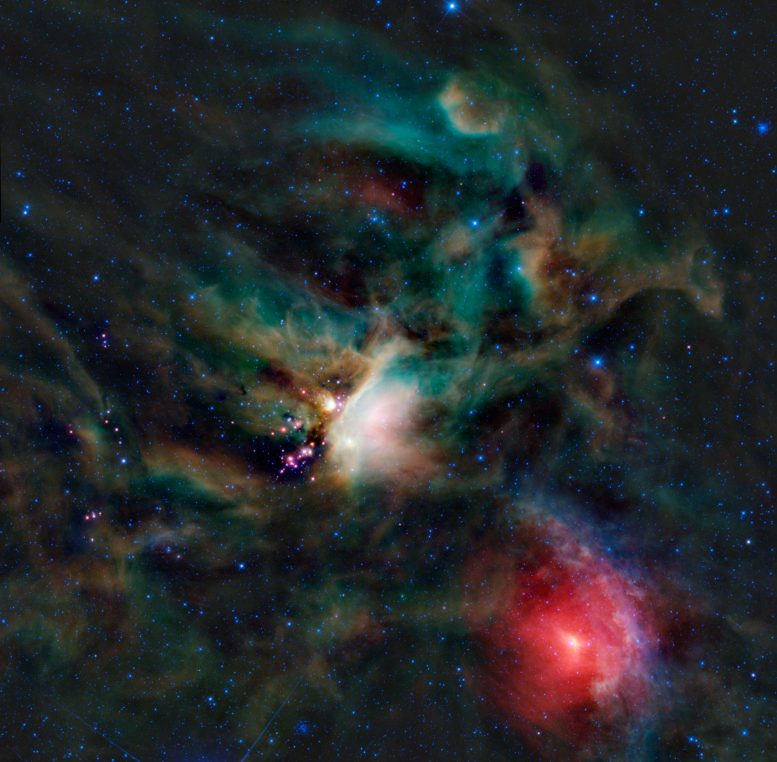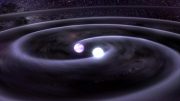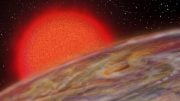
A false-color infrared image of the star forming region in the constellation of Ophiuchus. Recent observations have detected simple sugar, glycolaldehyde, around one of the faint, young reddish protostars in the region. Credit: NASA-WISE
A newly published study details the discovery of glycolaldehyde, a simple sugar, in the material around a newly developing star that is roughly the size of the Sun.
Astronomers have detected about 180 molecules in interstellar space, from simple ones like carbon monoxide (one atom of carbon and one of oxygen) to complex species like buckminsterfullerene (sixty atoms of carbon) or anthracene (fourteen atoms of carbon and ten of hydrogen). These chemicals are found in a wide variety of environments in the galaxy, and in principle can provide the backbone for the subsequent production of the molecules essential to life.
The search for molecules associated with life however, for example, simple sugars, has been less successful. The simplest sugar is glycolaldehyde (HCOCH2OH). It has been spotted in only two extreme places so far: a massive dense molecular cloud near the galactic center, and a dense core of gas and dust that is forming massive stars. It has not even been found in solar system comets, which are thought to contain samples of material dating from the early solar nebula.
A new paper in The Astrophysical Journal Letters reports discovering glycolaldehyde in the material around a newly developing star of approximately solar mass. CfA astronomer Tyler Bourke and five colleagues used the new Atacama Large Millimeter Array (ALMA) facility in Chile to observe the protostar IRAS16293-2422, located about 400 light-years away. They find thirteen different lines characteristic of this molecule, and their analysis finds that the gas is warm (about 200-300 kelvin) and probably part of a large system of material flowing in towards the star as it grows and develops a system of planets.
Although the exact mechanism(s) that produce the glycolaldehyde are uncertain, the new results help confirm that molecules associated with life exist in normal environments around young, solar-mass stars. The team notes that the new facility will enable astronomers to study this sugar in other places and begin to tell a more complete story of how the rich chemistry found on Earth developed.
Reference: “Detection of the Simplest Sugar, Glycolaldehyde, in a Solar-Type Protostar With ALMA” by, 29 August 2012, The Astrophysical Journal Letters.
DOI: 10.1088/2041-8205/757/1/L4









Glycolaldehyde discovered in Ophiucus constellation clearly speaks out the fact that Planet chemistry should be divided into another branch called extra- stellar chemistry where molecules like water cloud, oxygen, methane, ammonia, carbon-di-oxide etc are formed in the space itself with the help of high gamma radiation backround found in cosmos. An entire galaxy is initially filled with gases like nebula Andromeda, where some Hydrogen undergoes fusion like Sun and the non-stellar Hydrogen forms different molecules as an oort cloud hurling around the stars to impact on the planets surrounding them forming different planetary atmospheres. Our own Milky way galaxy cannibalises its neighbours like Nebula Andromeda cannibalising its neigbouring galaxies first drawing the gases in the inter-stellar space and then the stars. That is why most galaxies are gaseous predominantly. Mollecules of life like amino acids should have only extra-stellar origin. Thank you.